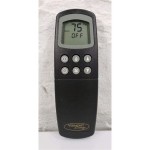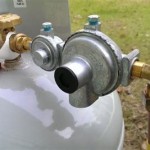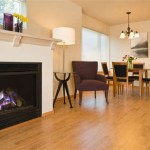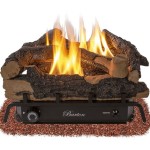Direct Vent Gas Fireplace Installation: A Comprehensive Guide
Direct vent gas fireplaces offer a combination of aesthetic appeal and heating efficiency, making them a popular choice for homeowners seeking supplemental or primary heat sources. Unlike traditional fireplaces, direct vent models draw combustion air from outside and vent exhaust gases directly to the exterior, eliminating the need for a traditional chimney and maximizing efficiency. This article provides a detailed guide to the installation process, highlighting key considerations and safety precautions.
Prior to beginning any installation work, it is crucial to consult and comply with all local building codes and regulations. A qualified professional should always be consulted for permits and inspections. Furthermore, thoroughly reviewing the manufacturer's installation manual is paramount. The manual provides specific instructions tailored to the particular model, including venting requirements, clearances to combustibles, and gas line connection procedures. Disregarding these instructions could result in improper installation, potentially leading to safety hazards, voiding warranties, and violating local ordinances.
The installation process typically involves preparing the installation location, installing the vent system, connecting the gas line, and completing the final setup and testing. Each of these phases requires careful attention to detail and adherence to safety guidelines.
Preparing the Installation Location
The first step involves selecting an appropriate location for the fireplace. Consider factors such as room size, proximity to existing walls and structures, and accessibility for venting. Direct vent fireplaces require a clear pathway for the vent system to run directly to the outside, typically through an exterior wall or roof. The location must also comply with the manufacturer's specified clearances to combustible materials and electrical outlets. These clearances are crucial to prevent fire hazards and ensure safe operation.
Once the location is determined, the next step involves framing the opening for the fireplace unit. The dimensions of the framing must precisely match the manufacturer's specifications. Proper framing ensures that the fireplace unit fits securely and avoids any undue stress on the surrounding structure. Construct the framing using appropriate lumber, ensuring it is level and plumb. After framing, prepare the hearth, if required, according to the manufacturer's guidelines. A hearth provides a non-combustible surface in front of the fireplace, protecting flooring and reducing the risk of accidental fires.
Before proceeding further, it's advisable to run all necessary electrical wiring to the location. This includes wiring for the fireplace controls, the blower (if applicable), and any other electrical features. It's important to use appropriately sized wiring and follow all electrical codes and regulations. Consider locating electrical outlets strategically to avoid unsightly cords and ensure convenient access.
Installing the Vent System
The vent system is a critical component of a direct vent fireplace, ensuring safe and efficient exhaust of combustion gases. The vent system must be installed according to the manufacturer's specifications, using approved vent pipes and fittings. Typically, direct vent systems use a coaxial design, with an inner pipe for exhaust gases and an outer pipe for intake air. This design ensures that the unit draws fresh air from outside and expels combustion byproducts without affecting indoor air quality.
Begin by attaching the vent adapter to the fireplace unit. This adapter connects the fireplace to the vent pipe. Ensure the adapter is securely fastened and properly sealed to prevent leaks. Next, assemble the vent pipes according to the manufacturer's instructions. The vent pipes must be properly joined and sealed, using the appropriate sealing compounds or gaskets. The vent system should be supported adequately, using vent straps or other approved supports, to prevent sagging or shifting.
Pay close attention to the vent termination location. The vent termination must be located away from windows, doors, and other air intakes to prevent re-entry of exhaust gases. It must also comply with all clearance requirements outlined in the manufacturer's instructions and local building codes. The vent termination should be properly sealed to prevent water infiltration and protect against weather elements. After installation, visually inspect the entire vent system to ensure it is properly assembled, supported, and sealed.
Connecting the Gas Line and Final Setup
Connecting the gas line requires extreme caution and should only be performed by a qualified gas technician or licensed plumber. Ensure the main gas supply is shut off completely before beginning any gas line work. The gas line must be sized appropriately for the fireplace's gas consumption rate, as specified in the manufacturer's instructions. Use approved gas pipes and fittings, and ensure all connections are leak-tested using a soap solution or a gas leak detector. Never use an open flame to check for gas leaks.
The gas line should be properly supported and protected from damage. Check for any kinks, bends, or other obstructions that could restrict gas flow. Before turning on the gas supply, double-check all connections to ensure they are tight and leak-free. Once the gas line is connected and tested, install the fireplace unit into the framed opening. Secure the unit according to the manufacturer's instructions, ensuring it is level and plumb.
After installing the unit, connect the electrical wiring and install any remaining trim pieces or accessories. Refer to the manufacturer's instructions for detailed guidance on completing the final setup. Finally, perform a test run of the fireplace, following the manufacturer's startup procedures. Monitor the fireplace's operation to ensure it is functioning correctly, with proper ignition, flame pattern, and venting. Check for any unusual noises, smells, or other signs of problems. If any issues are detected, immediately shut down the fireplace and consult with a qualified technician to troubleshoot the problem. Thoroughly review the manufacturer's operating instructions to ensure the homeowner understands the proper operation and maintenance requirements of the fireplace.

8kx Direct Vent Gas Fireplace Specifications And Installation Guide

How To Install A Direct Vent Pipe

Bdv7 Series Direct Vent Gas Fireplace Mhsc

Direct Vent Fireplace Installation And Operation Manual Do Not Discard

Heat Glo 8k Direct Vent Gas Fireplace Instruction Manual

How To Select And Install A Gas Fireplace Log Set Fireplaces Direct Learning Center

Mdv Series Direct Vent Gas Fireplace Mhsc

Directvent Pro Pipe

Mendota Direct Vent Manual

American Hearth Renegade Traditional Clean Face Direct Vent Fireplace Insert Appliances
Related Posts








